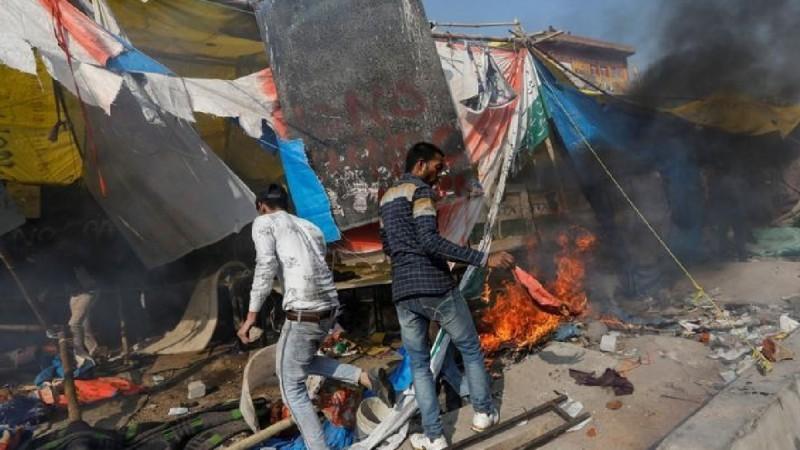
Seventeen people have lost their lives in the violence in North-East Delhi, while 186 people have been reported injured, the GTB Hospital said on Tuesday.
The identity of the deceased has not been made public as of now by the authorities, while the Delhi Police said that 56 policemen were among the injured.
Earlier in the day, addressing a press conference, Delhi Police spokesperson, ACP Mandeep Singh Randhawa said that 18 people had died while 186 people injured in the violence which erupted on Sunday.
Randhawa also claimed that the situation is under control in Jafrabad, Gokulpuri, and Maujpur areas as the police and government are alert and security has been beefed up in the areas.
He said that of 186 injured, 56 are policemen and condition of DCP Amit Sharma and the Gokulpuri ACP, who are under treatment, is critical.
As of now 11 FIRs have been registered in this regard and several arrests have been made, the ACP said.
Additional police forces and paramilitary forces have been deployed while senior Delhi Police officials are also present at the spot to tackle the situation.
Meanwhile, the Delhi Police have issued orders to shoot-at-sight in violence-hit parts.
In midnight hearing, HC orders safe passage for injured

An emergency midnight hearing on a plea seeking the safe passage of injured in riots in the northeast area of Delhi, took place before Justices S. Muralidhar and Anup J. Bhambhani of the Delhi High Court.
The meeting was held at the residence of Justice S. Muralidhar on Wednesday at 12:30 a.m.
The Bench has directed the Delhi Police to ensure safe passage for the injured by deploying all resources, as well as to make sure they receive immediate emergency treatment.
The court has directed the Delhi Police to file the status report of the compliance, including information about the injured people and the treatment offered to them. The matter will be taken up at 2:15 p.m. on Wednesday.
How violence unfolded?
The violence broke out in northeast Delhi's Muslim-dominated Maujpur, Jaffrabad, Chandbagh and Bhajanpura areas on Sunday and the situation went out of hand on Monday. Some reports claimed that the protesters were split into religious lines with some even chanting "shoot the traitors".
It all started after a controversial BJP leader Kapil Mishra threatened to forcefully remove the agitators staging a sit-in protest against the CAA. Mishra had given a three-day ultimatum to Delhi Police to vacate Jaffrabad and Chand Bagh roads where protests had been going on over the weekend. He said that once the US President had left India, his people won't listen to the cops and hit the streets to remove anti-CAA protesters.
On Sunday, clashes broke out between two groups near Jaffrabad where anti-CAA protesters had gathered. Stones were pelted and police had to fire tear gas shells to disperse the mob. The clashes didn't stop and the situation deteriorated further on Monday with both the groups wreaking havoc on Delhi roads.
Streets were full of stones and looked like some sort of war zones. The protesters set vehicles on fire and damaged public property in Moujpur, Jaffrabad and Chand Bagh areas. Shots were fired and TV cameras captured a man weaving gun in the air. He was later arrested by the police.
Section 144 was imposed in these areas and some reports claimed that internet services were also stopped. A massive police force was deployed and people were being checked at various posts.
The violence on Monday claimed seven lives. Six civilians and a Delhi police head constable were killed. The toll of injured was said to be over 100 and they included people from both sides and the police personnel.
While there has been no statement from Prime Minister Narendra Modi, Delhi Chief Minister Arvind Kejriwal appealed for calm. He said that Delhi police that comes under the Union Home Ministry, was not getting orders from the above and that there were not enough forces on the streets to control the situation.











